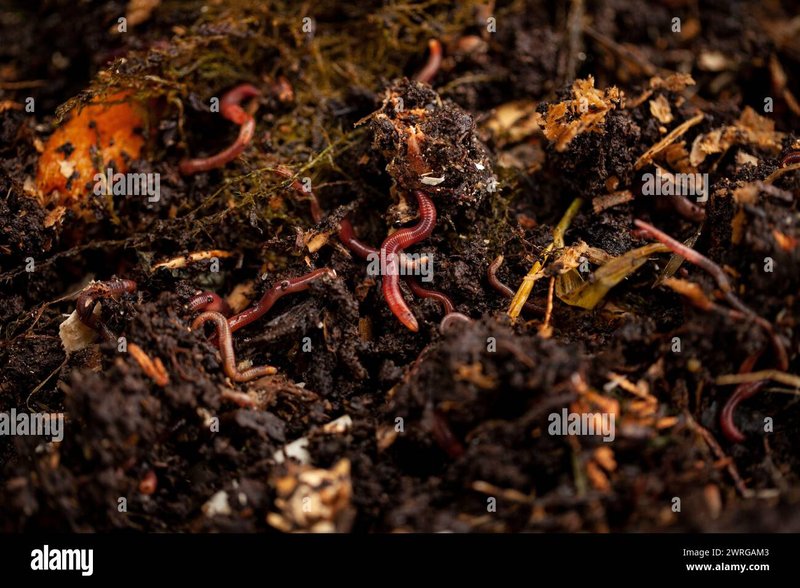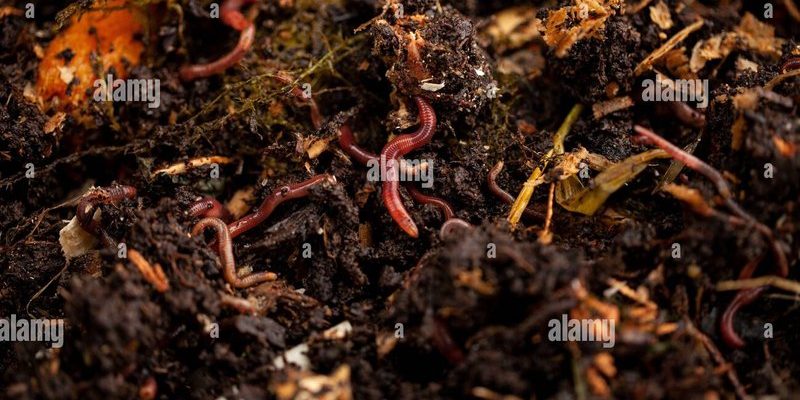
So, how exactly do these squiggly wonders perform their magic? Let’s dive into the fascinating world of earthworms and discover how they break down organic material. It’s not just about being slimy; there’s a lot of incredible science happening right beneath our feet. And trust me, you might find it a bit more interesting than you expected.
What are Earthworms and Their Role in the Ecosystem?
Earthworms are fascinating creatures that belong to a group called annelids. They can be found almost anywhere on Earth, from gardens to forests and even in our backyards. You might be wondering why these little guys are so important. Well, their primary role in the ecosystem is to decompose organic matter. This process enriches the soil and promotes plant growth.
Earthworms munch on fallen leaves, dead roots, and even other decomposing organisms. As they consume this organic material, they break it down in their guts, which is where the fun really begins. Their digging also aerates the soil, allowing water and nutrients to reach deeper roots. This means healthier plants and a more vibrant ecosystem. So, the next time you see one wriggling around, remember that it’s playing a crucial role in keeping our environment healthy.
How Earthworms Digest Organic Material
You might be curious about how exactly earthworms digest all that organic material. It starts with their unique anatomy. Earthworms have a specialized digestive system that processes food in stages. When they consume matter, it goes through several parts of their body, each adding to the digestive process.
First off, when an earthworm eats, it takes in organic material through its mouth, which is surprisingly equipped with a muscular structure called the pharynx. This helps suck in food, much like a vacuum. The food then travels to the crop, where it’s stored temporarily. After that, it moves to the gizzard, which grinds the material into smaller bits—almost like having an internal blender! This mechanical breakdown is important because it makes it easier for the worm to extract nutrients as the food continues to travel through its intestines.
As the food passes through the intestines, enzymes help break it down further. The earthworm absorbs the nutrients it needs, while the leftover waste is excreted as castings, which are packed with beneficial bacteria and nutrients. These castings are so rich that gardeners often refer to them as “black gold” for their ability to enhance soil fertility.
The Importance of Castings in Soil Health
So, why should we care about earthworm castings? Well, they play a critical role in maintaining healthy soil. Think of earthworm castings as nature’s fertilizer. They’re rich in essential nutrients like nitrogen, phosphorus, and potassium—key players for plant growth. This means that using castings in your garden can lead to stronger plants with vibrant blooms and bountiful harvests.
In addition to nutrients, earthworm castings also improve soil structure. They help create a crumbly texture, allowing for better water retention and drainage. This is important because plants need access to moisture without drowning in waterlogged soil. Castings also enhance microbial activity, leading to a thriving ecosystem of beneficial bacteria and fungi that help plants stay healthy.
Many gardeners prefer organic methods, so using earthworm castings is an excellent way to ensure your garden thrives without synthetic fertilizers. You can even create your own compost bin and let these amazing little creatures work their magic on kitchen scraps, turning waste into nutrient-rich soil amendment.
How Earthworms Contribute to the Carbon Cycle
Here’s a little secret: earthworms also play a significant role in the carbon cycle. When they break down organic material, they’re helping to sequester carbon in the soil. This means that carbon dioxide from the atmosphere gets transformed into organic matter—essentially storing it in a way that benefits the planet.
By breaking down plant material, earthworms contribute to the formation of stable organic carbon compounds. This process occurs as they eat and digest plant matter, altering its chemical structure. When earthworm castings are added to the soil, it promotes long-term carbon storage, mitigating climate change impacts.
By keeping carbon in the ground instead of releasing it into the atmosphere, earthworms are doing the Earth a huge favor. It’s like they’re nature’s little carbon soldiers, fighting against climate change one worm at a time.
How to Encourage Earthworms in Your Garden
If you’re excited about all the benefits that earthworms bring to your garden, you might be wondering how to encourage them to stick around. Here are some simple steps you can take:
- Avoid Chemicals: Pesticides and chemical fertilizers can harm earthworm populations. Instead, opt for organic gardening practices.
- Compost: Create a compost pile or bin where worms can thrive. This will provide them with a steady food source and a cozy habitat.
- Moisture: Earthworms thrive in moist soil, so keep your garden well-watered but not soggy.
- Mulching: Adding organic mulch can provide shelter for earthworms and improve soil health as it breaks down.
By following these tips, you can create an earthworm-friendly environment in your garden, ensuring they continue to work their magic in your soil for years to come.
Earthworms might be small, but their impact on the environment is enormous. They break down organic material and revitalize the soil, helping plants grow healthier and stronger. From their unique way of digesting food to their important role in the carbon cycle, these slimy critters play a crucial part in maintaining a balanced ecosystem.
So, the next time you see an earthworm, remember it’s not just a worm; it’s a vital player in the circle of life, turning waste into wonder. By taking steps to encourage them in our gardens, we can harness their power for healthier soil and a greener planet. Nature’s little recyclers might just be the key to a brighter, more sustainable future!

